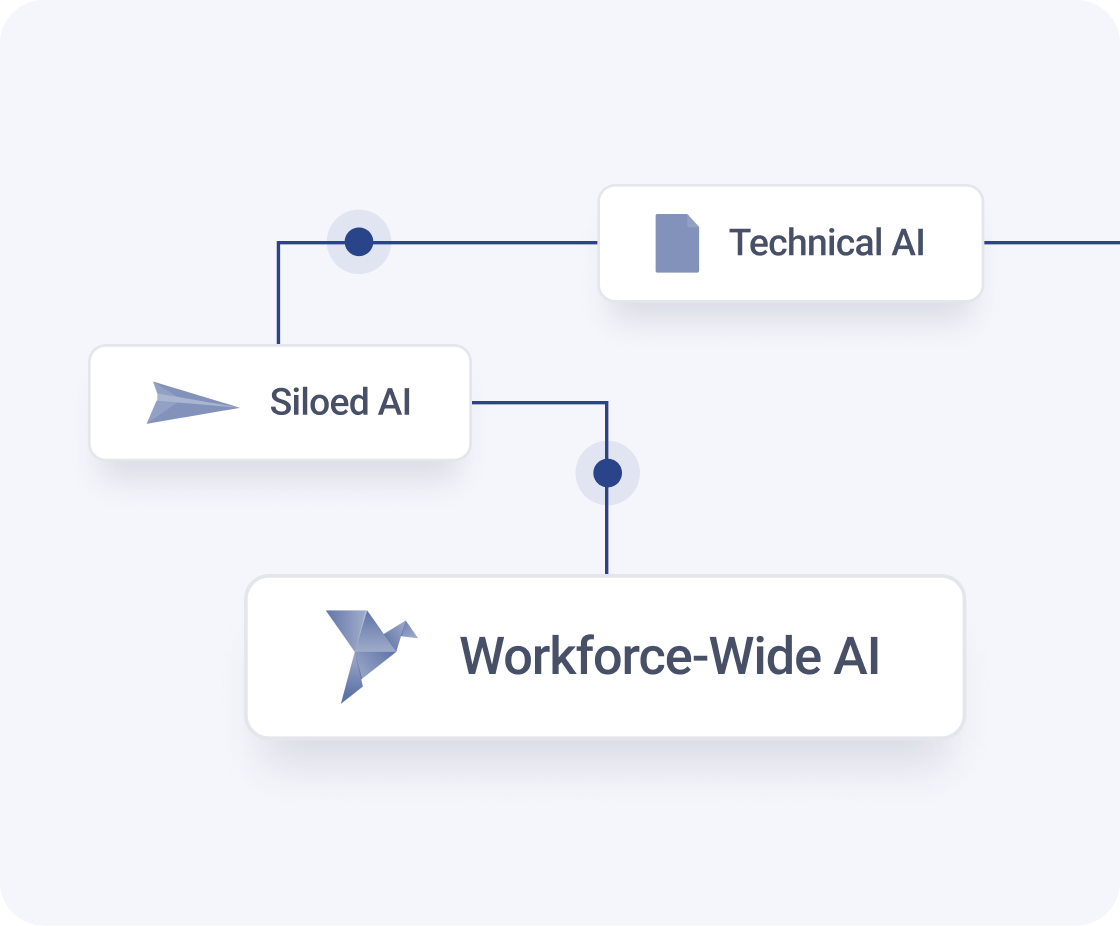
.png)
HomeServe is a leading peace-of-mind provider for nearly 5 million homeowners in North America. Working with 1,300 utilities and municipalities, and 2,500+ contractors, their mission is to free homeowners from the worry, inconvenience, and expense of home emergency repairs. Fast, thorough, always-available service is core to their operation.
In 2020, HomeServe built Charlie, an automated voicebot, to deflect more straightforward, easy to address calls from contact center agents and provide customers faster self-service resolutions. Crucial to the program’s success was the voicebot’s ability to recognize the callers’ intention–many of whom are calling with emergency repairs–and triage the call to the correct department.
The Problem
Working between Excel and coding notebooks, HomeServe didn’t have the right tools for their conversation designers and customer experience leaders to develop, measure, and manage the voicebot.
The Challenge of Solving Invisible Problems
The project began with a lean team of customer experience leaders and Java engineers. Once the initial voicebot was live, they needed to monitor and improve its performance to ensure the automated service met the standards of agent-managed calls.
Before working with HumanFirst, the team did this manually; analysts read as many transcripts as they could, looking for signs of underperformance. From the beginning, the volume of conversations was unmanageable. Auditing and developing the voicebot would be impossible at scale.
The Technical Divide
As the project sprawled, maintenance became increasingly technical. The voicebot was built and managed on prohibitively technical platforms, making it difficult for the customer service and conversation design teams to collaborate and improve the model with more data coming in.
The Solution
A Non-Technical Platform for Conversation Data
With the goal of improving the voicebot’s metrics, HomeServe was vetting third parties and attending conferences when they found HumanFirst.
With ready integrations to Dialogflow ES, where the initial voicebot lived, HomeServe could instantly import their existing NLU model and their conversation histories into HumanFirst to run analytics. Immediately, the team could identify confused intent categories, ambiguous call drivers, and missing training phrases.
Building with Transparency
HumanFirst provides a low-code, collaborative platform that makes it easy for business analysts, conversation designers, and automation engineers to apply AI to ground truth conversation data in order to develop, maintain, and improve their model’s performance.
With user-led search, semantic similarity, adaptive clustering, embeddings on upload, and access to any LLM, the data work that once required a technical team becomes available to any contributor. In an intuitive, drag-and-drop interface, business analysts and conversation designers can interact with the data to find patterns, disambiguate intent categories, add training phrases, and run tests to measure their progress.
A Business Case for a Better Solution
HomeServe used HumanFirst to review their existing bot from top to bottom. Their Dialogflow ES model had become big, messy, and hard to handle, with over 1,000+ intents. It was clear that simplifying the bot and migrating to Dialogflow CX would help them manage more complex conversations.
The Result
Migrating from Dialogflow ES to Dialogflow CX
Beginning with 1,000+ intents, the team transitioned to Dialogflow CX and simplified their model to 140 clarified intents. The initial project, which was four years in the making, was migrated to Dialogflow CX in only four weeks. The full transition was complete in three months, leaving HomeServe with a 90% simpler classification model.
HumanFirst integrates with Dialogflow CX to make continuous conversation monitoring and model improvement simple. The HomeServe team, now consisting of 7 hands-on analysts and conversation designers, is able to oversee and optimize every conversation.
All Non-Technical Hands On Deck
With HumanFirst, HomeServe achieved their primary goal of removing technical barriers, empowering language experts, customer experience specialists, and conversation designers to take the lead. Managing less intents with more precision and accuracy has made developers’ work more enjoyable.
Embedding Generative AI into Day-to-Day Processes
HumanFirst makes it easy to leverage LLMs with conversation data to generate call summaries, extract custom insights, generate training phrases and knowledge base articles, and understand data at scale.


.svg)

.png)
%20(31).png)
.png)
.png)

.png)
.png)
.png)
.png)
.png)